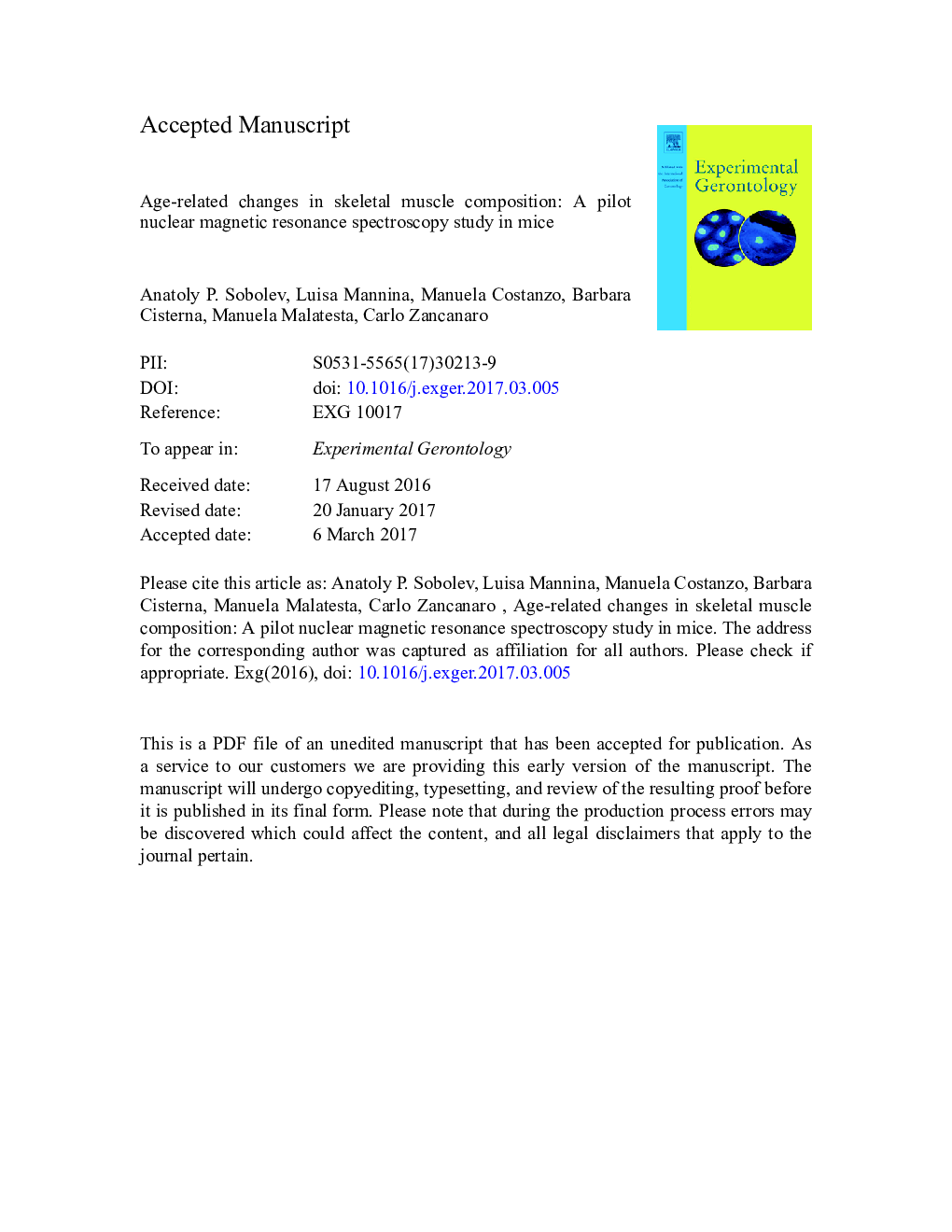| Article ID | Journal | Published Year | Pages | File Type |
|---|---|---|---|---|
| 5501574 | Experimental Gerontology | 2017 | 12 Pages |
Abstract
The composition of skeletal muscle was investigated in the quadriceps and gastrocnemius muscle of 13-month-old (n = 15) and 23-month-old (n = 19) mice by means of high-resolution nuclear magnetic resonance (NMR) spectroscopy. Muscle specimens were dissected out, frozen in liquid nitrogen and extracted in chloroform/methanol, and proton NMR spectra of the resulting aqueous and organic fractions were obtained at 600 MHz. Several metabolites were unambiguously identified and quantified. Multivariate ANOVA (factor: age, muscle, age Ã muscle) showed a significant main effect of age (P = 0.031) on the amount of muscle metabolites, suggesting that the aging process affects the composition of skeletal muscle. Univariate tests showed significant differences for lactate, acetate, taurine, and uridine in 13- and 23-month-old mice. A trend for the effect of muscle (quadriceps vs. gastrocnemius; P = 0.128) was also found. No significant muscle x age interaction was present. When the same data were used in principal component analysis, the first two principal components separated muscles (quadriceps and gastrocnemius) and ages (13- and 23-month-old), explaining 66.7% of total variance. The results of this pilot study show that high-resolution NMR spectroscopy is able to detect age-associated changes in skeletal muscle metabolites, thereby paving the way to future detailed metabolomics investigation in sarcopenia of aging.
Related Topics
Life Sciences
Biochemistry, Genetics and Molecular Biology
Ageing
Authors
Anatoly P. Sobolev, Luisa Mannina, Manuela Costanzo, Barbara Cisterna, Manuela Malatesta, Carlo Zancanaro,
